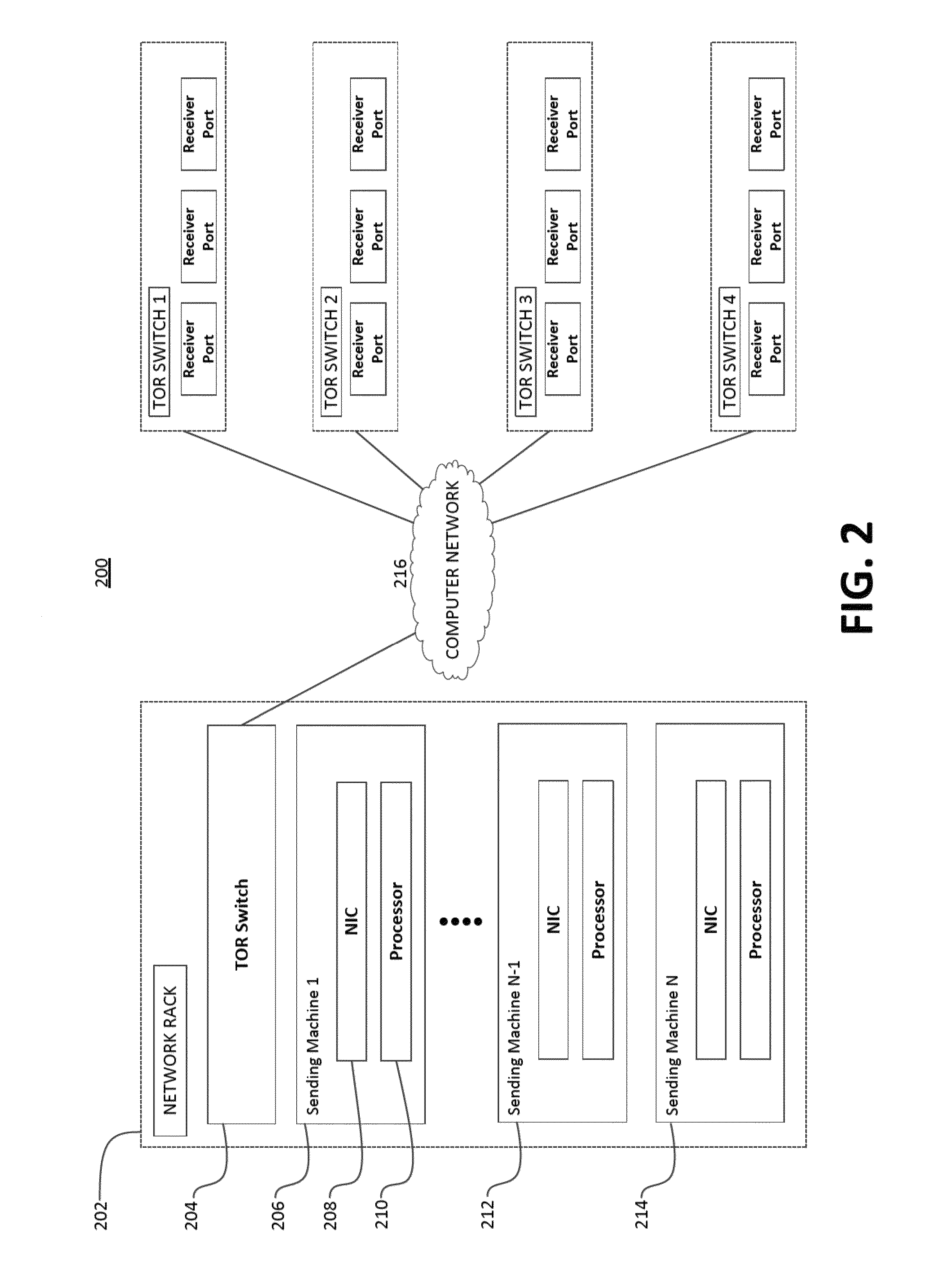Method and system for network micro flow control
a network micro and flow control technology, applied in the field of network micro flow control, can solve the problems of reducing the buffering needs of switching fabrics, reducing the number of dropped data packets, and inefficient conventional flow control techniques,
- Summary
- Abstract
- Description
- Claims
- Application Information
AI Technical Summary
Benefits of technology
Problems solved by technology
Method used
Image
Examples
Embodiment Construction
[0028]The aspects, features and advantages of the present technology will be appreciated when considered with reference to the following description of preferred embodiments and accompanying figures. The same reference numbers in different drawings may identify the same or similar elements. Furthermore, the following description does not limit the disclosure; rather, the scope of the technology is defined by the appended claims and equivalents.
[0029]In accordance with aspects of the present technology, a network transmitter has at least one multi-packet message pending to be sent to one or more receiving machines. As will be explained in more detail below, the network transmitter may be implemented on a network interface controller (“NIC”) or software running on a processor. In addition, the present technology may also be applied to each priority or Quality of Service (“QoS”) level.
[0030]Systems and methods are used to preemptively interleave individual data packets in specific patt...
PUM
 Login to View More
Login to View More Abstract
Description
Claims
Application Information
 Login to View More
Login to View More - R&D
- Intellectual Property
- Life Sciences
- Materials
- Tech Scout
- Unparalleled Data Quality
- Higher Quality Content
- 60% Fewer Hallucinations
Browse by: Latest US Patents, China's latest patents, Technical Efficacy Thesaurus, Application Domain, Technology Topic, Popular Technical Reports.
© 2025 PatSnap. All rights reserved.Legal|Privacy policy|Modern Slavery Act Transparency Statement|Sitemap|About US| Contact US: help@patsnap.com



